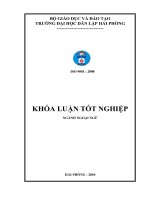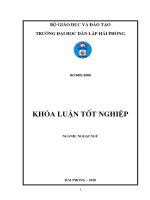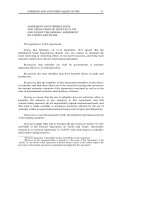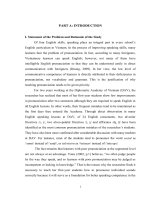general statements on english spelling and vowel sounds
Bạn đang xem bản rút gọn của tài liệu. Xem và tải ngay bản đầy đủ của tài liệu tại đây (206.97 KB, 1 trang )
English Banana.com
General Statements on English Spelling and Vowel Sounds
Below are some general statements that are often true regarding English spelling and vowel sounds. They are not
strict rules, but you can often count on them.
Take any word set and focus on the vowel sound in each word and how it is spelled. Discuss which statements apply
to which words and match the cards with the statement. Say why the exceptions are different, and then put the words
in each group into sound or spelling subgroups.
For each statement, try to learn the possible spelling/sound combinations.
1. Short vowel sounds are written with one vowel letter. These words are often phonetic.
In words of more than one syllable: the vowel letter will represent a short vowel sound when
followed by two or more consonant letters.
2. Long vowel sounds are written with an r in the spelling.
3. You can tell a word has a long vowel sound by the presence of two vowel letters which are
the same: ee or oo.
4. Long vowel sounds are written with two different vowel letters (a vowel digraph).
5. When you see vowel + consonant + e the vowel will say its alphabet name.
In words of more than one syllable: this can apply with other vowel letters too, not only e.
6. Diphthongs are written with an r in the spelling.
7. Diphthongs are written with two different vowel letters (a vowel digraph).
8. Other consonant letters like w, y, and gh count as part of long vowel sounds or diphthongs
in spellings, rather than consonant sounds; other consonant letters can occur as silent letters,
e.g. b in “debt”.
Exceptions:
Say why they don’t fit into any category.
66









